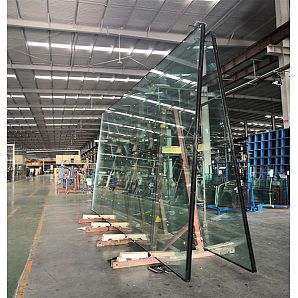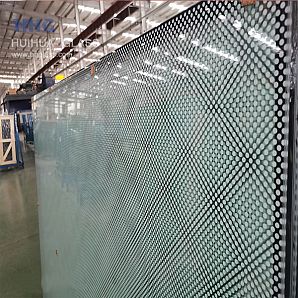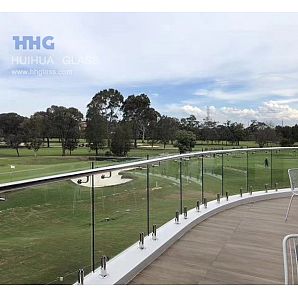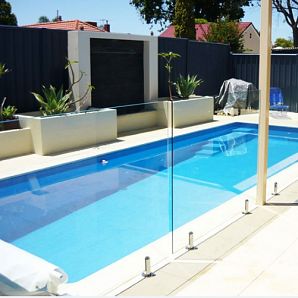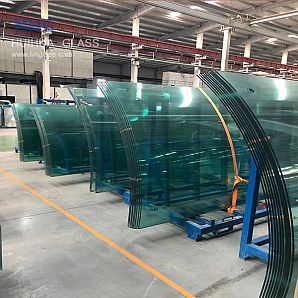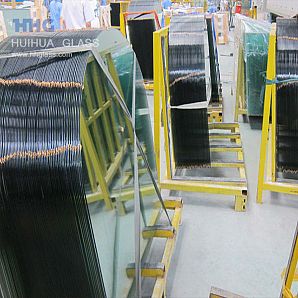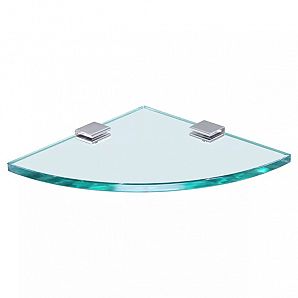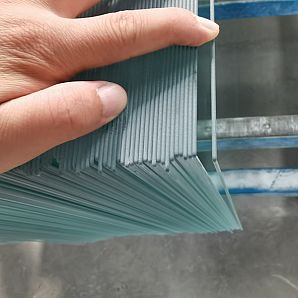Tempered glass/Reinforced glass belongs to safety glass. Also known as reinforced glass. Tempered glass is actually a type of pre-stressed glass. To improve the strength of glass, chemical or physical methods are usually used to form compressive stress on the surface of the glass. When the glass is subjected to external forces, it first offsets the surface stress, thereby improving its load-bearing capacity, enhancing its own resistance to wind pressure, heat and cold, and impact. Pay attention to distinguishing it from fiberglass.
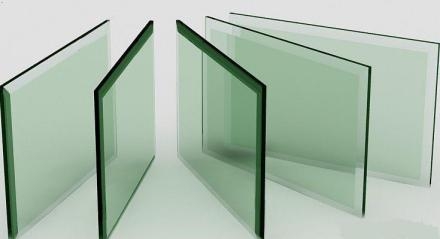
Tempered glass/Reinforced glass characteristic:
Security
When glass is damaged by external forces, the fragments will form small obtuse angle particles resembling honeycomb shapes, which are less likely to cause serious harm to the human body.
high strength
The impact strength of tempered glass with the same thickness is 3-5 times that of ordinary glass, and the bending strength is 3-5 times that of ordinary glass.
thermal stability
Tempered glass has good thermal stability, can withstand a temperature difference of three times that of ordinary glass, and can withstand a temperature change of 300 ℃.
Tempered glass/Reinforced glass advantage:
The first is that the strength is several times higher than that of ordinary glass, and it is resistant to bending.
The second is safety in use, as its load-bearing capacity increases and improves its fragility. Even if tempered glass is damaged, it appears as small shards without sharp angles, greatly reducing the harm to the human body. The resistance to rapid cooling and heating of tempered glass is 3-5 times higher than that of ordinary glass, and it can generally withstand temperature changes of over 250 degrees Celsius, which has a significant effect on preventing thermal cracking. It is a type of safety glass. To ensure the safety of qualified materials for high-rise buildings.
Tempered glass/Reinforced glass Disadvantages:
1. Tempered glass cannot be cut or processed again. It can only be processed to the desired shape before tempering, and then tempered.
2. Although tempered glass has stronger strength than ordinary glass, it has the possibility of self explosion (self rupture), while ordinary glass does not have the possibility of self explosion.
3. The surface of tempered glass may have unevenness (wind spots) and slight thinning of thickness. The reason for thinning is because after the glass is softened by hot melting, it is rapidly cooled by strong wind, causing the crystal gap inside the glass to decrease and the pressure to increase. Therefore, the glass is thinner after tempering than before. In general, 4-6mm glass thins by 0.2-0.8mm after tempering, while 8-20mm glass thins by 0.9-1.8mm after tempering. The specific degree depends on the equipment, which is also the reason why tempered glass cannot be used as a mirror.
4. Flat glass used in construction after physical tempering in a tempering furnace generally undergoes deformation, and the degree of deformation is determined by the equipment and technical personnel's process. To some extent, it affects the decorative effect (except for special needs).
preparation
Tempered glass is obtained by cutting ordinary annealed glass into the required size, heating it to around 700 degrees near the softening point, and then rapidly and evenly cooling it (usually 5-6MM glass is heated for about 240 seconds and cooled for about 150 seconds at a high temperature of 700 degrees. 8-10MM glass is heated for about 500 seconds and cooled for about 300 seconds at a high temperature of 700 degrees. In short, the time for heating and cooling varies depending on the thickness of the glass). After tempering, uniform compressive stress is formed on the surface of the glass, while tensile stress is formed inside, which improves the bending and impact strength of the glass, which is about four times stronger than ordinary annealed glass. Tempered glass that has been tempered and treated must not be subjected to any further cutting, grinding, or damage, otherwise it will be shattered due to the disruption of uniform compressive stress balance.
Tempered glass/Reinforced glass classification
By Shape
Tempered glass is divided into flat tempered glass and curved tempered glass according to their shape.
1. There are twelve types of thickness for general flat tempered glass, including 11, 12, 15, and 19mm; There are eight types of thickness for curved tempered glass, including 11, 15, and 19mm. The specific thickness after processing still depends on the equipment and technology of each manufacturer. But curved tempered glass has a maximum curvature limit for each thickness. R R, as commonly known, is the radius.
2. Tempered glass is divided into flat tempered and bent tempered according to its appearance.
3. Tempered glass is divided into excellent and qualified products based on its flatness. Premium tempered glass for automotive windshields; Qualified products are used for building decoration.
By process
1. Physical tempered glass is also known as quenched tempered glass. It involves heating ordinary flat glass in a heating furnace to a softening temperature close to 600 ℃, and then removing internal stress through its own deformation. The glass is then removed from the heating furnace, and high-pressure cold air is blown onto both sides of the glass using multiple nozzles, allowing it to quickly and uniformly cool to room temperature to obtain tempered glass. This type of glass is in a stress state of internal tension and external compression. Once local damage occurs, stress release will occur, and the glass will be broken into countless small pieces. These small pieces have no sharp edges and are not easy to harm people.
2. Chemical tempered glass is used to improve the strength of glass by changing the chemical composition of its surface, and is generally tempered using ion exchange method. The method is to immerse silicate glass containing alkali metal ions into a molten lithium (Li+) salt, causing Na+or K+ions on the surface of the glass to exchange with Li+ions, forming a Li+ion exchange layer on the surface. Due to the smaller expansion coefficient of Li+compared to Na+or K+ions, the outer layer shrinks less and the inner layer shrinks more during the cooling process. When cooled to room temperature, the glass is also in a state of inner layer tension and outer layer pressure, Its effect is similar to that of physical tempered glass.
By degree of steel
1. Tempered glass: Tempered degree=2-4N/cm, surface stress of tempered glass in glass curtain walls α≥ 95Mpa;
2. Semi tempered glass: Tempering degree=2N/cm, surface stress of glass curtain wall semi tempered glass 24Mpa ≤ α≤ 69Mpa;
3. Ultra strong tempered glass: Tempering degree>4N/cm.
Tempered glass/Reinforced glass Product Application
Flat tempered and bent tempered glass belong to safety glass. Widely used in high-rise building doors and windows, glass curtain walls, indoor partition glass, daylighting ceilings, sightseeing elevator passages, furniture, glass guardrails, etc. Tempered glass can usually be applied in the following industries:
1. Architecture, building formwork, decoration industry (such as doors and windows, curtain walls, interior decoration, etc.)
2. Furniture manufacturing industry (glass coffee tables, furniture accessories, etc.)
3. Home appliance manufacturing industry (products such as televisions, ovens, air conditioners, refrigerators, etc.)
4. Electronics and instrument industry (various digital products such as mobile phones, MP3, MP4, clocks, etc.)
5. Automobile manufacturing industry (car window glass, etc.)
6. Daily necessities industry (glass cutting boards, etc.)
7. Special industries (military glass)
After the tempered glass is broken, the fragments will break into uniform small particles and there is no common glass cutter like sharp corner, so it is called safety glass and widely used in cars, interior decoration, and the windows of high-rise buildings that open to the outside.
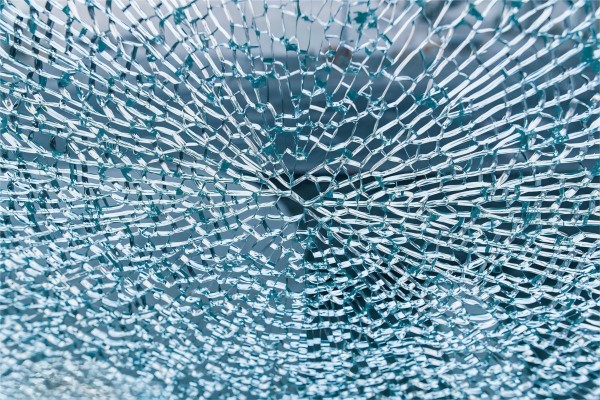
Emergency methods
Quality
Tempered glass is obtained by cutting ordinary annealed glass into the required size, heating it to a near softening point, and then rapidly and evenly cooling it. After tempering, uniform compressive stress is formed on the surface of the glass, while tensile stress is formed inside, greatly improving the performance of the glass. The tensile strength is more than three times that of the latter, and the impact resistance is more than five times that of the latter.
It is precisely this characteristic that stress characteristics become an important indicator for distinguishing true and false tempered glass. Tempered glass can see colored stripes at the edges of the glass through a polarizing light plate, while on the surface layer of the glass, black and white spots can be seen. Polarizing lenses can be found in camera lenses or glasses. When observing, pay attention to adjusting the light source for easier observation.
Tempered glass/Reinforced glass Self exploding defect
The automatic cracking of tempered glass without direct mechanical external force is called self explosion of tempered glass. According to industry experience, the self explosion rate of ordinary tempered glass is around 1-3 ‰. Self explosion is one of the inherent characteristics of tempered glass.
There are many reasons for self explosion caused by expansion, which can be summarized as follows:
① The impact of glass quality defects
A. Stones, impurities, and bubbles in glass: Impurities in glass are weak points and stress concentrations in tempered glass. Especially if the stone is located in the tensile stress zone of tempered glass, it is an important factor leading to cracking.
Stones exist in glass and have a different coefficient of expansion from the vitreous body. After glass tempering, the stress concentration in the crack area around the stone increases exponentially. When the coefficient of expansion of the stone is less than that of glass, the tangential stress around the stone is in a tensile state. Crack propagation accompanying stones is highly prone to occur.
B. Glass contains nickel sulfide crystals
Nickel sulfide inclusions generally exist as small crystalline spheres with a diameter of 0.1-2 mm. The appearance is metallic, and these impurities are Ni3S2, Ni7S6, and Ni-XS, with X=0-0. 07。 Only Ni1-XS phase is the main cause of spontaneous fragmentation of tempered glass.
The theoretical NIS is known to be at 379. There is a phase transition process at C, starting from the high-temperature state α— The NiS hexagonal crystal system transforms into a low-temperature state β— During the process of NiS cubic crystal system, a volume expansion of 2.38% was observed. This structure is preserved at room temperature. If the glass is heated in the future, it may quickly appear α—β State transition. If these impurities are inside the tempered glass under tensile stress, volume expansion will cause spontaneous cracking. If there is a-NIS at room temperature, it will gradually transition to β During this phase transition, a slow increase in volume may not necessarily cause internal rupture.
C. Defects such as scratches, bursts, and deep edges on the surface of glass caused by improper processing or operation can easily lead to stress concentration or self explosion of tempered glass.
② Uneven stress distribution and deviation in tempered glass
The temperature gradient generated along the thickness direction of glass during heating or cooling is uneven and asymmetric. There is a tendency for self explosion in tempered products, and some may produce "wind explosion" during quenching. If the tensile stress zone shifts to one side of the product or to the surface, tempered glass will form self explosion.
③ The effect of tempering degree has been experimentally proven to reach a self explosion rate of 20% to 25% when the tempering degree is increased to level 1/cm. From this, it can be seen that the greater the stress, the higher the degree of tempering, and the greater the amount of self explosion.
Tempered Glass/Reinforced Glass Development History
The development of tempered glass can be traced back to the mid-19th century. A prince of the Rhine named Robert once conducted an interesting experiment in which he placed a drop of molten glass in cold water, resulting in an extremely hard glass. This high-strength granular glass is like a droplet of water, with a long and curved tail, known as the 'Prince Robert Small Grain'. But when the tail of Xiaoli was bent and broken, it was strange that the entire Xiaoli suddenly collapsed violently, even becoming a fine powder. The above method is very similar to the quenching of metal, which is the quenching of glass. This type of quenching does not cause any changes in the composition of the glass, so it is also called physical tempered, hence tempered glass is called tempered glass.
The first patent for glass tempering was obtained by the French in 1874. The tempering method involves heating the glass to a temperature close to the softening temperature and immediately immersing it in a relatively low temperature liquid tank to increase surface stress. This method is the early liquid tempering method. Frederick Siemens from Germany obtained a patent in 1875, while Geovge E. Rogens from Massachusetts in the United States applied the tempering method to glass wine glasses and lamp columns in 1876. In the same year, HughO'Heill of New Jersey obtained a patent.
In the 1930s, Saint Gobain Company in France, Tripp lux Company in the United States and Pilkington Company in the United Kingdom began to produce large-area flat tempered glass for automobile windshields. Japan also carried out the production of tempered glass industry in the 1930s. From then on, the world began the era of large-scale production of tempered glass.
After 1970, Triplex Company in the UK successfully tempered glass with a thickness of 0.75~1.5mm using liquid medium, ending the history of physical tempering not being able to toughen thin glass, which was a major breakthrough in tempered glass technology.
The history of tempered glass in China began in 1955, with trial production at Shanghai Yaohua Glass Factory and successful trial production at Qinhuangdao Tempered Glass Factory in 1958. In 1965, Yaohua Glass Factory in Qinhuangdao began producing tempered glass for military purposes. In the 1970s, Luoyang Glass Factory was the first to introduce Belgian tempered equipment. During the same period, Shenyang Glass Factory put chemical tempered glass into production.
Since the 1970s, tempered glass technology has been widely promoted and popularized worldwide. Tempered glass has been used in fields such as automobiles, architecture, aviation, electronics, and more, especially in the fields of architecture and automobiles.
Tempered glass/Reinforced glass Self Explosive Solution
Reduce stress value
The distribution of stress in tempered glass is that the two surfaces of tempered glass are under compressive stress, while the core layer is under tensile stress. The stress distribution in the glass thickness is similar to a parabolic curve. The center of the glass thickness is the vertex of the parabola, which is the point where the tensile stress is maximum; There is compressive stress near the two surfaces of the glass on both sides; The zero stress surface is approximately one-third of the thickness. By analyzing the physical process of tempering and quenching, it can be seen that there is a rough proportional relationship between the surface tension of tempered glass and the maximum tensile stress inside, that is, the tensile stress is 1/2 to 1/3 of the compressive stress. Domestic manufacturers generally set the surface tension of tempered glass at around 100MPa, but the actual situation may be higher. The tensile stress of tempered glass itself is about 32MPa~46MPa, and the tensile strength of glass is 59MPa~62MPa. As long as the tension generated by the expansion of nickel sulfide is within 30MPa, it is sufficient to cause self explosion. If the surface stress is reduced, it will correspondingly reduce the inherent tensile stress of tempered glass itself, thereby helping to reduce the occurrence of self explosion.
The surface stress range of tempered glass specified in the American standard ASTMC1048 is greater than 69MPa; The semi tempered (heat strengthened) glass is between 24MPa and 52MPa. The standard BG17841 for curtain wall glass specifies a semi tempered stress range of 24<; δ≤ 69MPa。 The new national standard GB15763 implemented in China. 2-2005 "Safety Glass for Building Use - Part 2: Tempered Glass" requires that the surface stress should not be less than 90MPa. This is 5MPa lower than the 95MPa specified in the old standard, which is beneficial for reducing self explosion.
Uniform stress
The uneven stress of tempered glass can significantly increase the self explosion rate, which cannot be ignored. The self explosion caused by uneven stress can sometimes be very concentrated, especially in a specific batch of bent tempered glass, where the self explosion rate can reach an alarming level of severity and may occur continuously. The main reason is the uneven local stress and the deviation of the tension layer in the thickness direction, which also has a certain impact on the quality of the original glass sheet itself. Uneven stress can significantly reduce the strength of glass, which to some extent increases the internal tensile stress, thereby increasing the self explosion rate. If the stress of tempered glass can be uniformly distributed, it can effectively reduce the self explosion rate.
Hot dip treatment
Hot dip treatment, also known as homogenization treatment, is commonly known as "detonation". Hot dip treatment is the process of heating tempered glass to 290 ℃± 10 ℃ and holding it for a certain period of time to promote the rapid crystal phase transformation of nickel sulfide in tempered glass. This allows tempered glass, which was originally intended to self explode after use, to be artificially broken in advance in the factory's hot dip furnace, thereby reducing the self explosion of tempered glass during installation and use. This method generally uses hot air as the heating medium, and is referred to as "Heat Soak Test" or HST in foreign countries, which is literally translated as hot dip treatment.
Difficulties in hot dipping. From a theoretical perspective, hot dip treatment is neither complex nor difficult. But in reality, achieving this process indicator is very difficult. Research has shown that there are various specific chemical structural formulas for nickel sulfide in glass, such as Ni7S6, NiS, NiS1.01, etc. Not only do the proportions of various components vary, but other elements may also be doped. The speed of its phase transition highly depends on the temperature. Research has shown that the phase transition rate at 280 ℃ is 100 times that at 250 ℃, so it is necessary to ensure that each piece of glass in the furnace undergoes the same temperature regime. Otherwise, on the one hand, low temperature glass cannot completely phase change due to insufficient insulation time, which weakens the effectiveness of hot dip. On the other hand, when the glass temperature is too high, it can even cause the reverse phase transformation of nickel sulfide, causing greater hidden dangers. Both of these situations can lead to ineffective or even counterproductive hot dip treatment. The uniformity of temperature during the operation of hot dip furnaces is so important, and the temperature difference inside most domestic hot dip furnaces even reaches 60 ℃ during hot dip insulation. It is not uncommon for imported furnaces to have a temperature difference of about 30 ℃. So even though some tempered glass undergoes hot dip treatment, its self explosion rate remains high.
In fact, the hot dip process and equipment have also been continuously improving. The German standard DIN18516 specifies an insulation time of 8 hours in the 90 year version, while the prEN14179-1:2001 (E) standard reduces the insulation time to 2 hours. The effect of the hot dip process under the new standard is very significant, and there are clear statistical technical indicators: after hot dip, it can be reduced to one self explosion per 400 tons of glass. On the other hand, the hot dip furnace is constantly improving its design and structure, and the heating uniformity has also been significantly improved, which can basically meet the requirements of the hot dip process. For example, the self explosion rate of the hot dip treated glass of China Southern Glass Group has reached the technical indicators of the new European standard, and it has performed extremely satisfactorily in the 120000 square meter Guangzhou New Airport mega project.
Although hot dip treatment cannot guarantee the absolute absence of self explosion, it does reduce the occurrence of self explosion and effectively solve the problem of self explosion that troubles all parties in the project. So hot dip is the most effective method recognized in the world to completely solve the problem of self explosion.
Precautions Packaging
Products should be packaged in containers or wooden boxes. Each piece of glass should be packaged in plastic bags or paper, and the space between the glass and the packaging box should be filled with light and soft materials that are not prone to causing visual defects such as scratches on the glass. The specific requirements should comply with relevant national standards.
Packaging Mark
The packaging label should comply with the relevant national standards, and each packaging box should be marked with words such as "facing up, gently moving and placing, carefully crushing, glass thickness, grade, factory name or trademark".
Transport
The various types of transportation vehicles and handling rules used for the product should comply with relevant national regulations.
During transportation, wooden boxes should not be placed flat or tilted, and the length direction should be the same as the direction of movement of the conveying vehicle. Measures such as rain protection should be taken.
Storage
The product should be stored vertically in a dry room.
HHG is a professional glass manufacturer and glass solution provider include range of tempered glass, laminated glass, textured glass and etched glass. With more 20 years development, there are two produce lines of pattern glass ,two lines of float glass and one line of restoration glass. our products 80% ship to overseas, All our glass products are strict quality control and carefully packed in strong wooden case, ensure you receive the finest quality glass safety in time.
More Detail: www.hhglass.com

